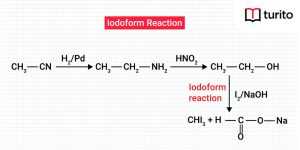Bond Energy
Atoms in a molecule are connected to one another by bonds. But what is a bond? The strong force of attraction between ions, atoms, or molecules facilitates the formation of chemical compounds. This definition leaves you wondering how strong is the force of attraction. And that is what bond energy definition is all about. The following article thoroughly studies bond energies and how they vary for different elements and compounds.
What is Bond Energy?
Bond energy is also referred to as average bond enthalpy or bond enthalpy. It is the energy quantity that gives an understanding of the strength of a chemical bond.
Bond Energy Definition: The term bond energy can be defined as follows:
“The value obtained as an average of the bond dissociation enthalpies (energies) of all chemical bonds of a particular type for a given compound”
It must be noted that the enthalpies are taken in the gaseous state.
Thus, the bond energies of chemical bonds in compounds are the average amount of energy needed to break such chemical bonds.
Understanding Bond Energies with Example
For a clear understanding of the concept, it must be remembered that the bond energy of a chemical bond in a chemical compound is the average value. This average is for all the individual bond dissociation enthalpies (energies) of the bonds.
For instance, suppose you consider a methane molecule. Its formula is CH4. The following structural diagram of methane will give you a complete idea of the chemical bonds in a molecule.
The bond energy of a C—H (carbon-hydrogen) bond in a methane molecule will be equal to the average of the bond dissociation enthalpies of every carbon-hydrogen bond. It can be calculated as follows.
CH4 + Bond Dissociation E1 → CH3 + H
CH3 + Bond Dissociation E2 → CH2 + H
CH2 + Bond Dissociation E3 → CH + H
CH + Bond Dissociation E4 → C + H
BE(C-H) = (Bond Dissociation E1 + Bond Dissociation E2 + Bond Dissociation E3 + Bond Dissociation DE4)/4
In the above set of equations:
- Bond Dissociation E1 denotes the amount of energy needed to break one C–H bond in the CH4
- Similarly, Bond Dissociation E2 is the energy needed to break a C–H bond in the CH3
- Bond Dissociation E3 is the energy required to break a C—H bond in the CH2
- Bond Dissociation E4 is the energy needed to break the only C—H bond in the CH molecule.
- BE(C-H), in the last equation, represents the bond energy of the C—H bond in the methane molecule, which is calculated by taking the average of the four energies mentioned above.
Thus, the bond energy of methane’s carbon-hydrogen bond can be pictured as the change in enthalpy associated with the breakage of a CH4 molecule into 1 carbon atom and 4 hydrogen atoms. The total energy will be divided by four, i.e., the total number of similar bonds in the molecule.
Now that you know what bond energies are, it is important to understand the factors affecting the bond energies of various atoms and molecules.
Unit of Bond Energy
It is usually denoted by ΔH. The unit of bond energy is kcal/ mol or kilojoule /mol, abbreviated as kJ/mol.
It is to be noted that the bond energy is always a positive value. The positive sign is because it is the energy that is supplied to break the chemical bonds.
Factors Affecting Bond Energy
It values vary for different atoms. For instance, the bond energy of a C—C bond is different from the bond energy of a C—H bond. It is 347kJ/mol for a C—C bond and 413 kJ/mol for a C—H bond. Also, the energies differ when carbon atoms are bound to one another through double/ triple bonds.
The bond enthalpy trend is as follows:
Hydrogen Bonds < Dipole Attraction < Covalent Single Bond < Covalent Double Bond < Covalent Triple Bond < Ionic Bond
How Does Bond Energy Relate to Stability?
If you go by the definition of bond energy, it is the energy required to break a chemical bond of a given compound. Thus, it is directly proportional to the stability of a bond.
The above statement implies that the greater the bond energy between two atoms of a given chemical compound, the greater the stability of that chemical bond. It will be more difficult to break a chemical bond with higher bond energy.
Difference Between Bond Energy and Bond Dissociation Energy
| Bond Energy | Bond Dissociation Energy |
| Bond energy is the average of the gas-phase bond dissociation energies (typically at 298 K) between the same types of atoms. Bond energy and bond dissociation energy.
| On the other hand, is not the same thing. Bond dissociation energy is the standard enthalpy change that occurs when a covalent bond (also known as a molecular bond) is cleaved by homolysis (breakdown into equal pieces) to yield fragments, which are usually radical species. |
| Bond energy is an average value. | whereas bond dissociation energy is a specific value for a specific bond. |
Is Bond Energy the Same as Dissociation Energy?
No, the two are different. The Bond Dissociation Energy (BDE), as shown in the above example of methane, is the change in enthalpy related to the breaking of a chemical bond through homolytic cleavage. For example, the BDE of a molecule B—C is the energy required to favor the homolytic cleavage of the chemical bond between the atoms B and C, resulting in two free radicals. BDE of a chemical bond depends on the absolute temperature of the environment. So, the bond dissociation energy is usually estimated under standard conditions.
Contrastingly, the bond energy of a bond for a given compound is the average value of all the bond dissociation enthalpy values of bonds in that molecule.
The following example further explains the difference between the two terms.
Example: Hydrogen-Oxygen Bond in Water
BDE of water’s hydrogen-oxygen bond is given by:
H2O + BDE → OH- + H+
The above equation explains that when a water molecule is supplied with a certain amount of energy, it splits into two free radicals: H and OH.
The bond energy water’s hydrogen-oxygen bond will be given by:
H2O + BDE1 → OH + H
OH + BDE2 → H + O
BE(O-H) = (BDE1 + BDE2)/2
Thus, the bond energy is the energy needed to separate all the H–O bonds in a water molecule, and the total energy is then divided by 2.
Importance of Bond Energy
Bond energy is a crucial concept and important to determine as it gives insights into the strength of a chemical bond. The strength or weakness of chemical bonds helps analyze the stability of a chemical compound. Although the concept appears simple, it has a significant role in determining the structure and characteristics of a molecule. It is important to understand how different compounds would react, dissociate, or reassemble in a chemical reaction.
Average Bond Enthalpies
The following table has the values of the average bond enthalpies:
|
Bonds | Bond Enthalpy |
| C—H |
413 kJ/mol |
|
C—C | 348 kJ/mol |
|
C—O | 358 kJ/mol |
| C—N |
293 kJ/mol |
|
H—H |
432 kJ/mol |
| H—F |
565 kJ/mol |
|
H—Cl | 427 kJ/mol |
| H—Br |
363 kJ/mol |
|
C=C | 614 kJ/mol |
| C≡C |
839 kJ/mol |
|
N≡C |
891 kJ/mol |
Conclusion
The average of bond dissociation enthalpies is referred to as bond energy or bond enthalpy for a given compound or molecule. Bond energies are closely related to the stability of the atom or molecule. The higher the bond energy, the stronger the chemical bond and the more difficult it will be to cleave the bond.
Frequently Asked Questions
1. Why does a chemical bond always have a positive bond energy value?
Breaking a chemical bond requires energy, and thus, bond energy usually is a positive number. On the contrary, when a bond is formed, the energy is the same as the bond energy in magnitude, but it is negative as the energy is released in this process. If it comes out to be negative, it implies that the bond cannot exist as it will be unstable.
2. How does bond dissociation energy differ from bond energy in MgCl2?
The primary difference between bond energy and bond dissociation energy is that the former is an average of the latter, i.e., it is the average of all the bond dissociation energies in a compound between two similar types of atoms. In MgCl2, the bond energy of the Mg—Cl bond is the total energy needed to break the molecule into an Mg and two Cl atoms, i.e., the bond dissociation energy of the two Mg–Cl bonds divided by two.
3. What is a bond enthalpy equation?
The values of bond energies are used to calculate the enthalpies of chemical reactions. A bond enthalpy equation helps calculate the enthalpy of chemical reactions. An equation represents the sum of the bond enthalpies broken minus the sum of the bond enthalpies formed. So, the equation will be reactants’ total enthalpies minus the products’ total enthalpies. The equation can be written as follows:
Δ H∘ = ∑ ΔH reactants − ∑ ΔH products
4. Why is bond formation an exothermic process?
Bond formation is an exothermic process because it is the opposite of bond cleavage. Since bond cleavage requires energy, bond formation releases bonding energy. In a reaction, the energy change is the difference between the products and the reactants. Thus, bond formation is an exothermic process that releases energy into the surroundings. The temperature of the surroundings therefore increases.

Relevant Articles
Butanoic Acid – Structure, Properties, Uses
Butanoic Acid The carboxylic acid, butanoic acid, has the structural …
Butanoic Acid – Structure, Properties, Uses Read More »
Read More >>What is Iodoform? Characteristics and Uses
Iodoform The formula for Iodoform is CHI3. It is biotic …
What is Iodoform? Characteristics and Uses Read More »
Read More >>Lattice Energy – Explanation, Factors & Formulas
Lattice Energy Lattice energy evaluates the intensity of the ionic …
Lattice Energy – Explanation, Factors & Formulas Read More »
Read More >>Lead Acetate – Definition, Properties, Uses
Lead Acetate Have you ever licked lipstick when you sketch …
Lead Acetate – Definition, Properties, Uses Read More »
Read More >>





















Comments: